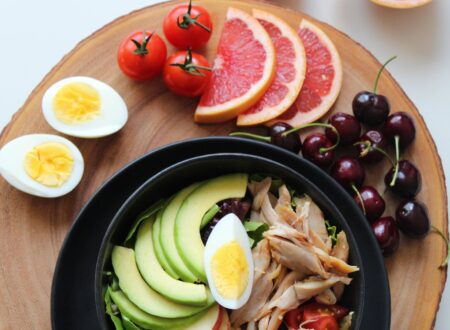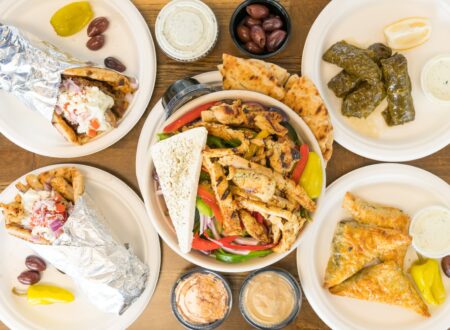There’s something magical about food. It brings people together, tells stories, and offers a delicious glimpse into cultures around the world. You don’t need a passport or a plane ticket to experience the flavors of the globe—just a few spices, a bit of curiosity, and your home kitchen.
If you’ve been cooking the same go-to meals on repeat, it might be time to spice things up—literally. Exploring international cuisines not only elevates your cooking skills, but it also turns every meal into a flavorful adventure. Ready to take your taste buds on a trip? Here’s how to bring global flavors into your own kitchen and discover the world, one dish at a time.
Why Global Flavors?
Exploring international cuisine goes beyond satisfying cravings. It’s about:
- Cultural appreciation: Learning the traditions behind different dishes.
- Expanded palate: Trying new textures, spices, and ingredients.
- More variety: Breaking out of the same-old routine.
- Healthier meals: Many traditional dishes use whole foods, herbs, and spices for bold taste without relying on processed ingredients.
Plus, it’s just plain fun!
Start with the Spice Rack
You don’t need to revamp your entire kitchen to get started—just stock up on a few versatile, region-specific spices. Here are some essential picks:
🌶️ Middle Eastern & Mediterranean
- Cumin: Earthy and warm, great in hummus, stews, and roasted meats.
- Sumac: Tangy and slightly fruity, perfect for salads or sprinkled on grilled chicken.
- Za’atar: A blend of herbs, sesame seeds, and sumac—amazing on flatbreads.
🌶️ Indian
- Turmeric: Bright yellow and subtly bitter, known for its anti-inflammatory properties.
- Garam Masala: A spice mix of cinnamon, cardamom, cloves, and more.
- Coriander & Mustard Seeds: Aromatic and essential for curries.
🌶️ Mexican & Latin American
- Chili Powder: Adds smoky heat to beans, tacos, or soups.
- Oregano (Mexican variety): Earthier than the Mediterranean type—great in sauces.
- Cinnamon (Canela): Often used in savory dishes, not just desserts.
🌶️ Asian
- Ginger & Garlic: Foundational flavors in stir-fries and soups.
- Five-Spice Powder: A mix of sweet and spicy—great in meat marinades.
- Soy Sauce & Fish Sauce: Umami-packed liquids that build depth.
Global Recipes to Try at Home
Ready to cook? Here are a few approachable global dishes to test your skills and awaken your senses.
🍛 Indian Butter Chicken (Murgh Makhani)
Creamy, spiced, and perfect with rice or naan, this dish is rich but not overly complex. Marinate your chicken in yogurt and spices, then simmer in a tomato-cream sauce infused with garam masala and ginger.
🌮 Mexican Street Tacos
Use corn tortillas and keep toppings simple: seasoned meat (like carnitas or grilled chicken), chopped onions, cilantro, and a squeeze of lime. Add homemade salsa for extra flair.
🍜 Thai Coconut Curry
Coconut milk, red or green curry paste, and veggies come together quickly for a weeknight-friendly dish. Add shrimp, chicken, or tofu and serve with jasmine rice.
🥙 Mediterranean Mezze Platter
Combine store-bought or homemade hummus, baba ghanoush, olives, falafel, and pita for a no-cook global spread. Add some pickled veggies for brightness.
🍝 Italian Pasta with a Twist
Go beyond spaghetti with marinara—try pasta alla puttanesca with olives, capers, and anchovies for bold, briny flavor. Pair with a crisp white wine.
Tips for Cooking International Cuisine at Home
Cooking global dishes can feel intimidating at first, but with the right approach, it’s easy and enjoyable. Here’s how to make the transition smoother:
✅ Start Small
Don’t try to master a five-hour recipe on your first attempt. Instead, incorporate one or two new ingredients into dishes you already know how to make.
✅ Use Online Resources
YouTube, food blogs, and cooking apps are treasure troves of global recipes, often with step-by-step instructions and beginner-friendly variations.
✅ Shop Ethnic Markets
Local international grocery stores are great for authentic ingredients and inspiration. Plus, the staff often have cooking tips and recommendations.
✅ Batch Cook & Freeze
Many global dishes like curries, stews, and dumplings freeze well. Make extra and store it for quick, flavorful meals later on.
✅ Respect the Culture
Take time to learn the origins of dishes you try. Understanding the story behind the food enhances your appreciation and cooking experience.
Fun Ideas to Keep the Flavor Going
Looking to make global cooking a bigger part of your lifestyle? Try these:
- Host a themed dinner night (e.g., Italian night, Korean BBQ, Moroccan tagine).
- Cook through a country every month—pick recipes, movies, and even music from that culture.
- Do a spice swap with friends to share unique finds and experiment with new flavors.
Final Thoughts: Cook with Curiosity
Exploring global flavors in your home kitchen isn’t just about trying something new—it’s about connection. Each dish tells a story, and every bite is an opportunity to learn more about the world and the people in it.
So whether you’re simmering a fragrant curry, grilling up tacos, or enjoying a bowl of ramen, remember this: flavor is a passport. And your kitchen is the gateway to endless destinations.
Now go on—spice it up





